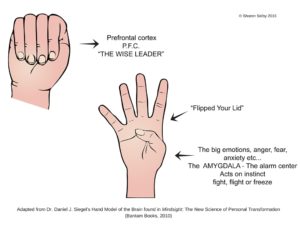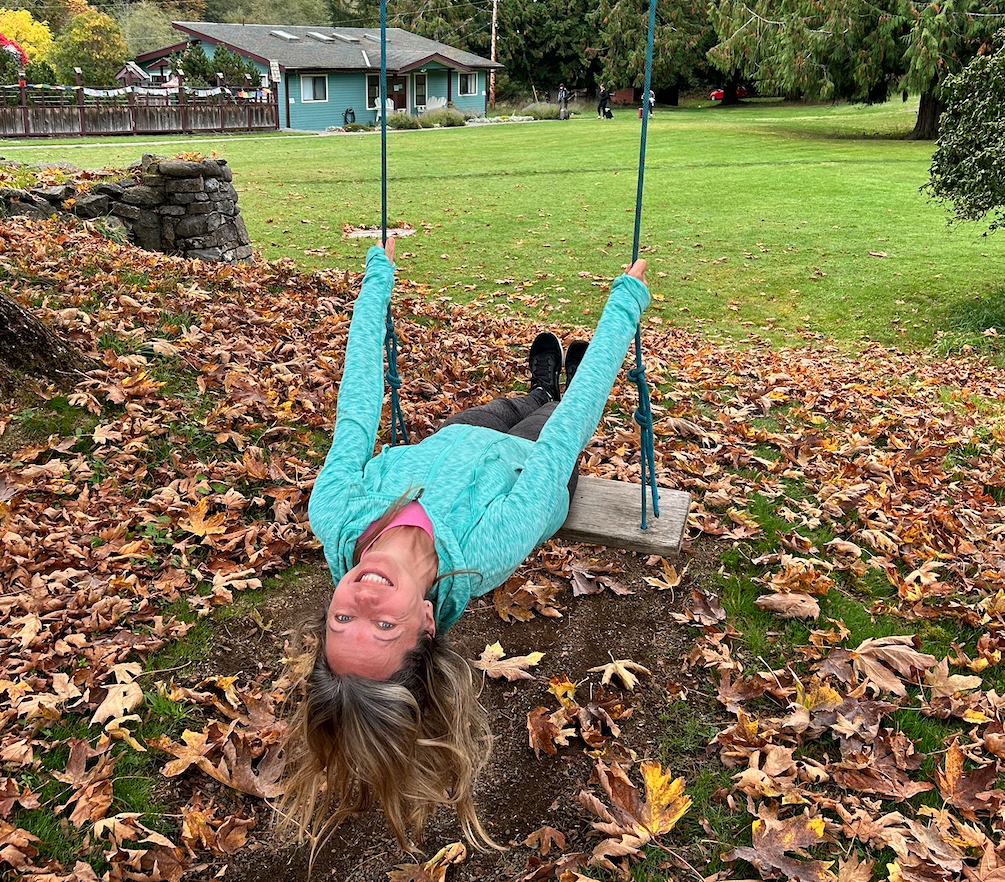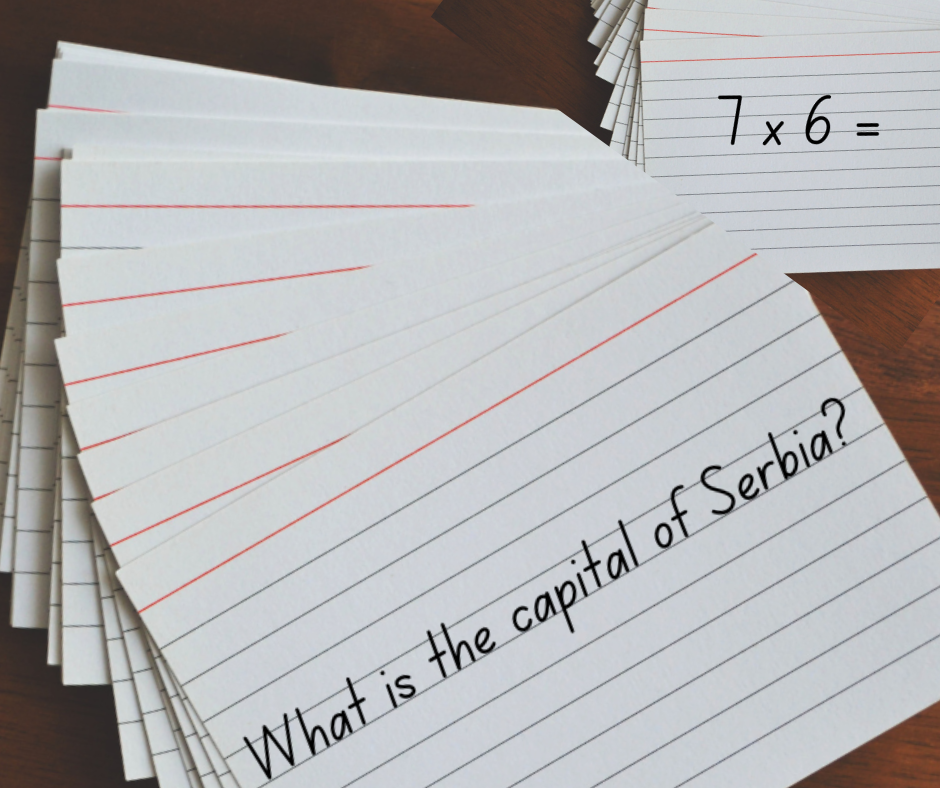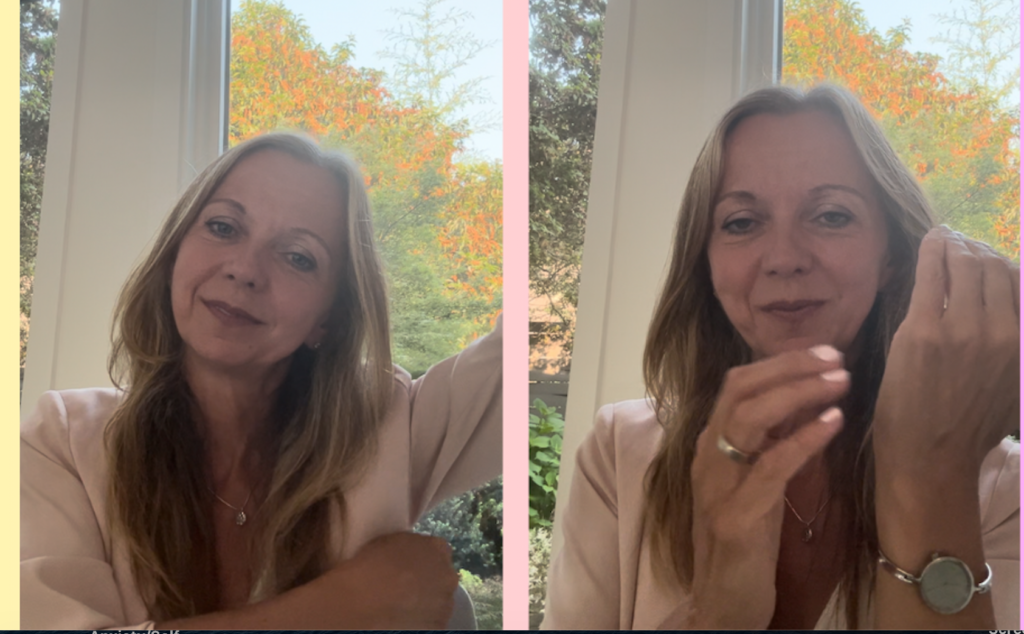Understanding the Brain
Dr. Daniel Siegel and Tina Payne Bryson’s book The Whole-Brain Child is, in my opinion, a must-read. They take all the current brain research and in parent-friendly terms explain what is happening to your child’s brain when, for example, he/she has a temper tantrum or gets stuck on a negative emotion, and how to build more adaptive ways of handling big emotions.
The “Upstairs Brain” and the “Downstairs Brain”
One analogy they use is “the upstairs brain” and “the downstairs brain”. The downstairs brain is the lower limbic more primitive part of the brain that acts out of instinct. This is the area of the brain responsible for breathing, blinking, fight or flight reactions and the big emotions like anger or fear. The upstairs brain controls higher-order thinking such as imagining, planning, decision making and analytical thinking. When the upstairs brain is functioning well, one can regulate emotions, think before leaping, have empathy, morality and self-understanding.
The goal for parents is to help their children integrate the upstairs and the downstairs brain with a metaphorical staircase. We need input from both parts of our brain to make wise decisions. However, the downstairs brain is well developed at birth but the upstairs brain isn’t fully developed until one is in the mid-twenties! Dr. Gordon Neufeld says that the pre-frontal cortex (the thinking, reasoning part of the brain- the “wise leader”) begins to develop from age 5-7rs. and for more intense children closer to age 7rs.
Therefore, if we are expecting our 2,3,or 4 year olds to make sense of their big emotions or be reasonable when they are upset, then our expectations are unrealistic. Even our 5-7 year olds are just in the beginning of stages of learning how to regulate their emotions. The upstairs brain is “under construction” (as Daniel Siegel says) and it is our role, to help children develop the skills to make good decisions, control their emotions and bodies, develop empathy, self-understanding and morality.
Furthermore, when the “alarm centre” or “guard dog” centre of our brain, the amygdala, senses danger it shuts down the “upstairs brain”, therefore allowing us to act before we think. This is very important if it is a true emergency such as falling from a tall tree. In this example, we need to act on instinct by reaching out for branches to brace our fall vs. taking the time to think of a rational plan of action. However, if the amygdala senses stress, which it interprets as danger, when writing a test then this will still cause the thinking upstairs part of the brain to be shut down which is obviously very unhelpful. This is an example of a false emergency but the amygdala does not know the difference as it only acts on instinct according to the information it receives from the environment.
Upstairs Tantrums vs. Downstairs Tantrums
An upstairs tantrum takes place with thinking skills and intentionality. “I want my way and I’m going to get it now”. This calls for clear limit setting by the parent. However, a downstairs tantrum is when one is so upset that the amygdala takes over and blocks access to the upstairs thinking, reasoning higher-order brain. Now your child has “lost his/her mind” or “flipped his/her lid”. The first task it to connect to the child by holding him/her and depending on the child’s temperament, validate his/her feelings. Sometimes saying “You’re really mad right now” can make a child feel worse, but saying “It’s been a tough day” or “You’re having a hard time” can be effective. For other children, a hug without words can work better. There is no point debriefing or discussing appropriate vs. inappropriate behaviour at this moment.
The Brain as a Fist (see above picture)
Daniel Siegel suggests that we close our fingers around our thumb to make a fist and think of this as our brain. The hidden thumb in the centre of our palm represents the downstairs brain – the amygdala – the “alarm centre” and area of big emotions. The fingers that close over the thumb represent the upstairs thinking part of the brain. When we are calm we can still be upset and express our feelings calmly but only if the thinking upstairs part of the brain is still in connection with the downstairs emotion/instinct area. However, sometimes when we get really upset, we might “flip our lid”! The fingers rise up and the upstairs brain is no longer in connection with the downstairs part of the brain to keep it calm. This is when one takes the “low road” and says or does things that are regretted later. Teach this brain fist model to your child and remember to use it for yourself if you feel that they or you are about to “flip your lid”. Walk away, take deep breaths and look at your fingers closing over your thumb as a reminder for what needs to happen in your brain to calm down and have access to your upstairs thinking brain once more.
Have a wonderful week integrating the upstairs brain and downstairs brain,
Warmly,
Want to Connect?
Subscribe now to receive free weekly parenting tips and inspiration.









One thought on “The Brain Science of Tantrums”
Comments are closed.